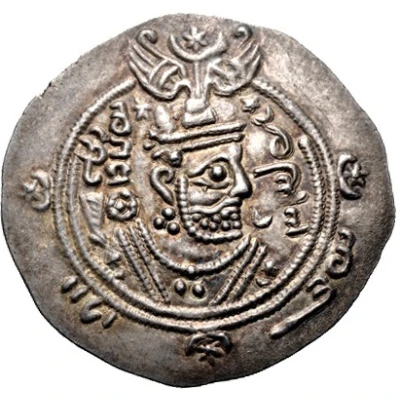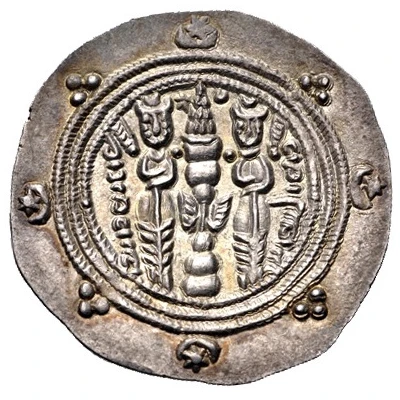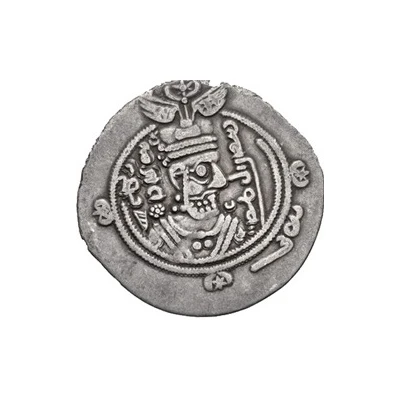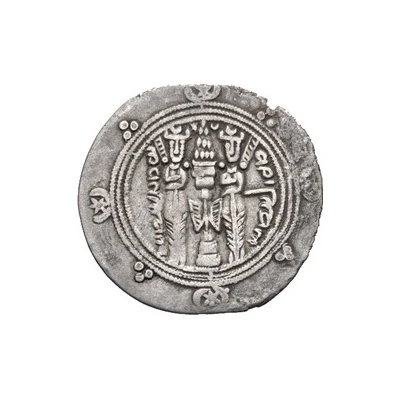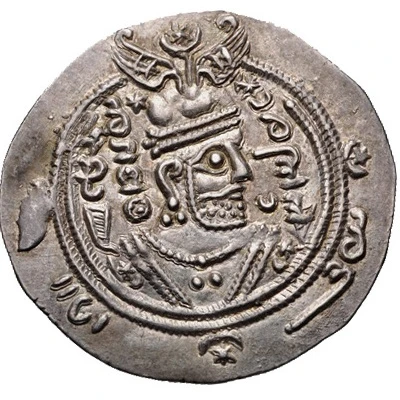
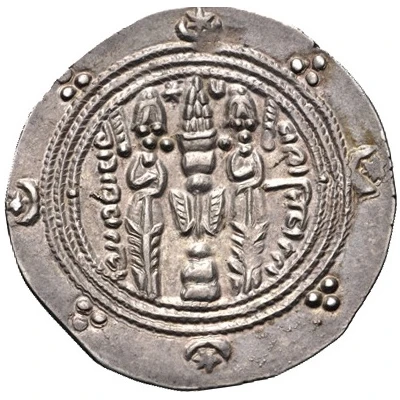

½ Drachm - "Ispahbadh of Tabaristan" Farrukhan the Great Arab-Sasanian ND
| Silver | 2 g | 24 mm |
| Issuer | Dabuyid dynasty (Greater Iran) |
|---|---|
| Type | Standard circulation coin |
| Years | 727-728 |
| Value | ½ Drachm |
| Currency | Drachm (642-760) |
| Composition | Silver |
| Weight | 2 g |
| Diameter | 24 mm |
| Shape | Round (irregular) |
| Technique | Hammered |
| Demonetized | Yes |
| Updated | 2024-10-05 |
| Numista | N#74596 |
|---|---|
| Rarity index | 89% |
Reverse
Fire altar, flanked two attendants standing facing, star left and crescent right flanking top of flame, Pahlavi Post-Yazdegard Era date (year 76) on left, Pahlavi mint signature (TPWRSTAN) on right, within triple border, four star in crescents and four groups of three pellets in outer margin
Comment
After the last Sasanian King, Yazdegard III was assassinated in 651 A.D., rule in the highlands of Tabaristan, south of the Caspian Sea, was held by two Dabuyid vassal kingdoms, the Qarinvandids and Bavandids. In 716, the Dabuyid ruler Farrukhan the Great successfully contained a large-scale invasion by the Umayyad general Yazid ibn al-Muhallab. Farkhan took the title Ispahbad, by which the dynasty is known, and issued Sasanian type hemidrachms dated with the Post-Yazdegerd Era. He was also notable for being an active builder, constructing the city of Sari, where he moved his court.
Interesting fact
One interesting fact about this coin is that it features an image of a mythical creature called a "dargin" on its reverse side. The dargin is a creature from Persian mythology that is said to have the body of a lion and the head of an eagle, and it is often depicted on coins from the Dabuyid dynasty. The inclusion of this creature on the coin suggests that the rulers of the Dabuyid dynasty were interested in showcasing their cultural heritage and mythological beliefs through their currency.
